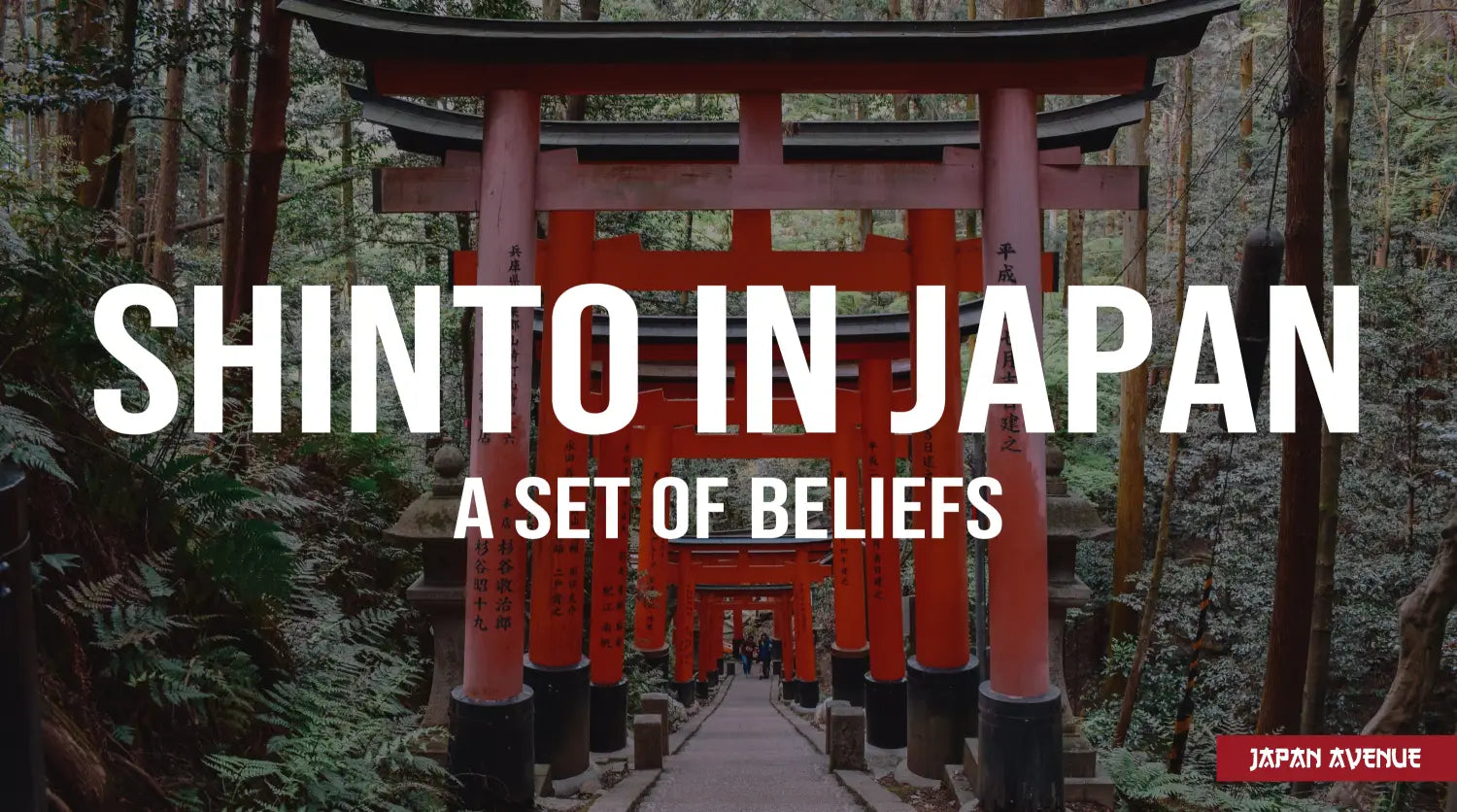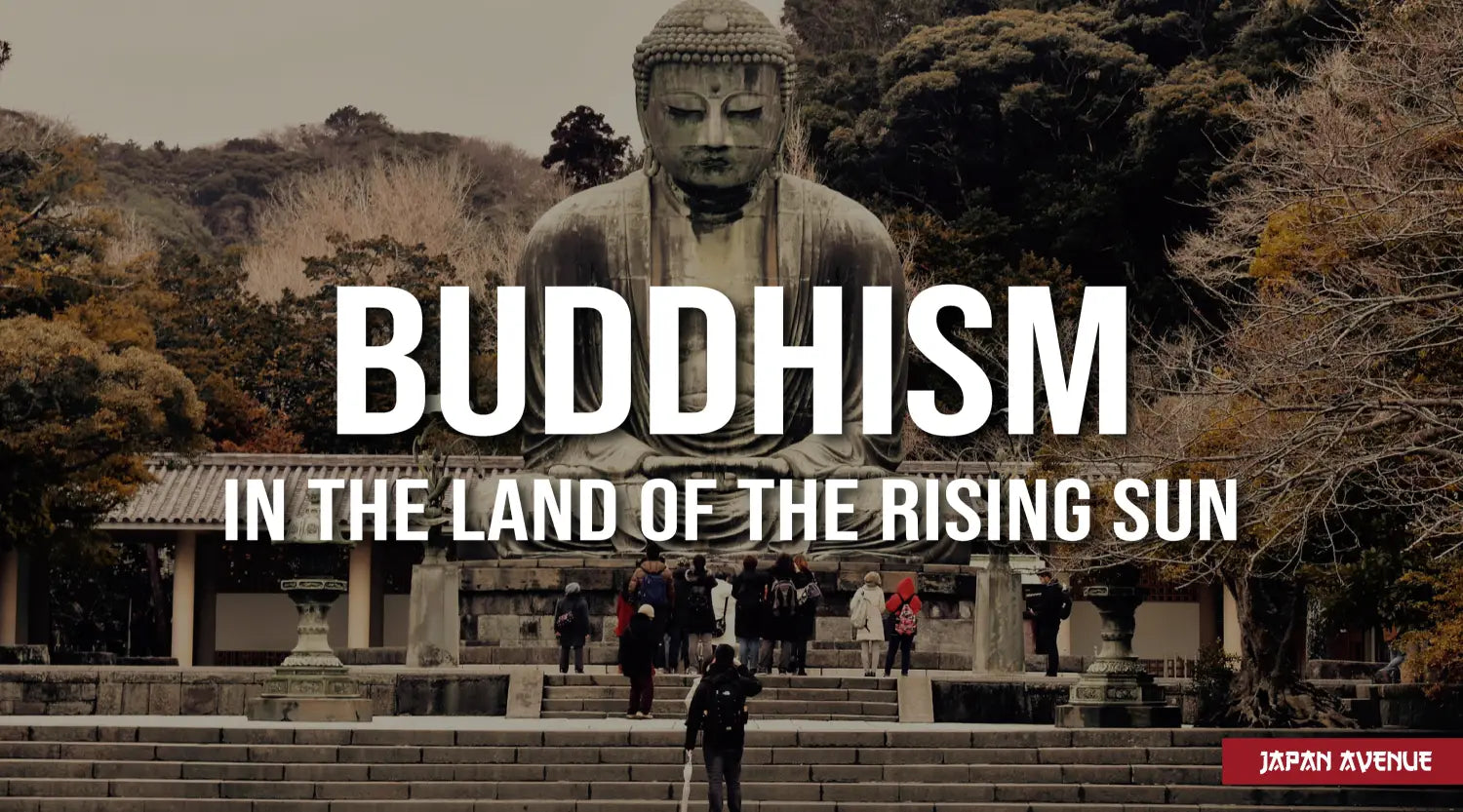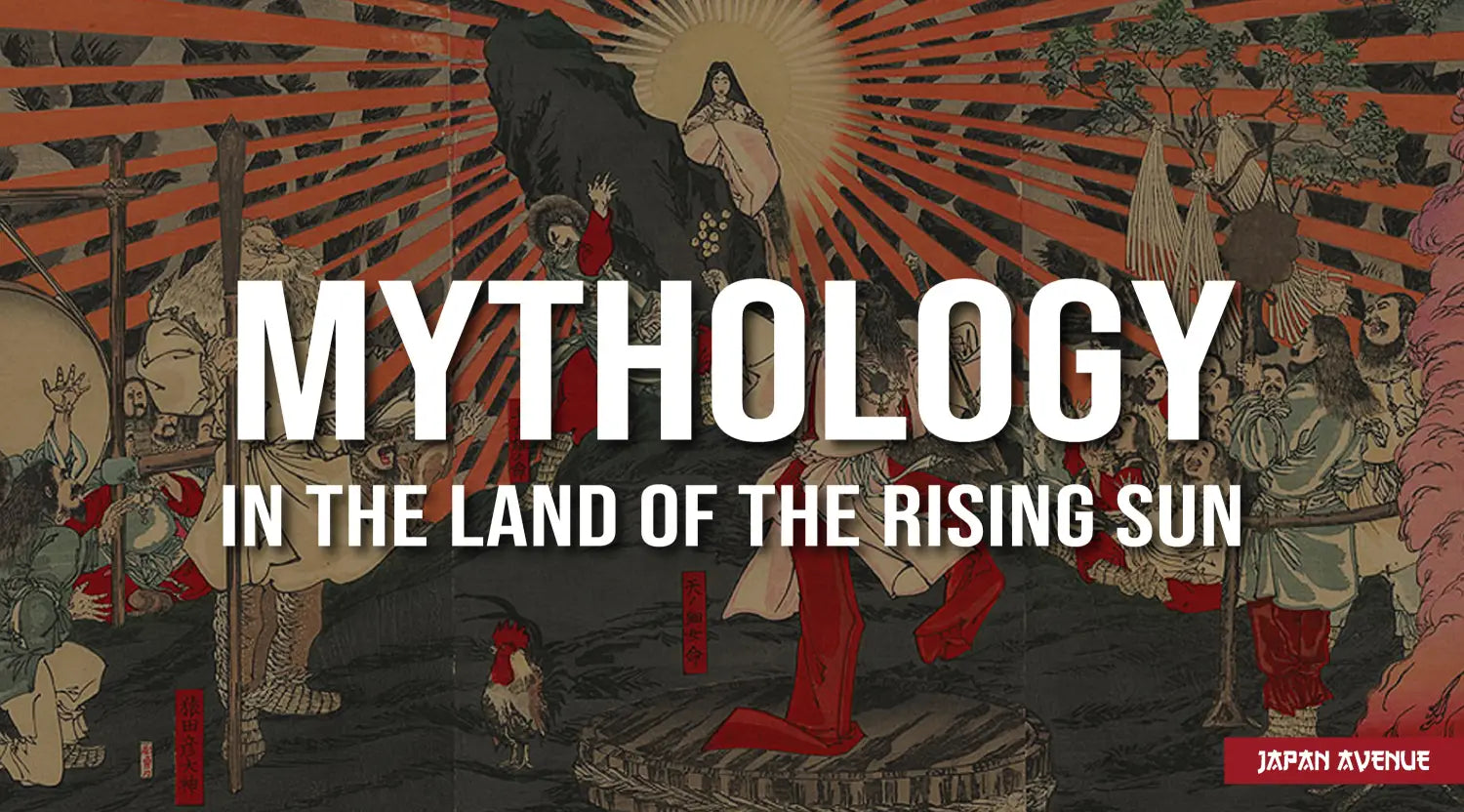For understanding the Japanese culture, it is necessary to first look at the religions that dominate the country, namely: Shintoism and Buddhism. If the first was imported by the Chinese and Koreans, the second is native to the archipelago.
Shinto is a Japanese polytheistic religion which stems from the animistic and shamanistic beliefs of ancient Japan. Signifying "way of the gods", Shinto worships the spirits of nature or kami.
Let's focus on the oldest religion in Japanese history.
🤓 Japanese Shinto, religion or philosophy?
The Shinto religion is not accompanied by any moral code or sacred book unlike the most well-known monotheistic religions which were established by prophets. It is a cult that developed naturally from traditions and beliefs of the Japanese people. The rituals and the deep respect towards the kami are fundamental elements in this religion, which everyone practices in their own way.
Likewise, followers are not bound to one single cult. Thus, Shintoism can be combined with other religions like Buddhism, Confucianism, Taoism or Christianity. In Japan, it is quite common to follow multiple religions at the same time.
Shinto is not based on any particular dogma, however, we can quote two reference texts: the Kojiki and the Nihon Shoki, published at the beginning of the Nara period. These are compilations of myths about the cosmogony of Japan and the origin of Shinto deities in which the divine descent of the emperor is traced.
🧜♂️ Kami and Japanese mythology

Amaterasu emerging from the celestial rock cave (Shunsai Toshimasa, 1887). Source: wikipedia.
Shintoism in Japan is based on the worship of kami (Japanese gods). They are the superior entities or spirits of nature that rule the world and impose respect (or terror). Nature elements such as trees, rocks and animals, all represent kami. Likewise, the spirits of ancestors, great chiefs or dead emperors are considered as deities in the Shinto cult.
Shinto deities are at the heart of Japanese mythology. As mentioned before, the Kojiki and the Nihon shoki are collections of myths and legends that describe the origin of the kami. In the first one, we can find the demiurge couple Izanagi and Izanami as well as the sun goddess Amateratsu and other important deities. In the second one, the history of the first Japanese emperor (descendant of Amaterasu) and of the imperial lineage is recounted.
In Japan, the kami are ambivalent entities. They must be worshipped and above all not offended at the risk of attracting a bad spell (tatari).
⛩ Shinto shrines

ise-jingu. Source: blog.gaijinpot.com
The Shinto cult is very much present in Japan and many shrines populate the archipelago. Each building is the residence of a kami.
Ise-jingu, Izumo-taisha and Fushimi Inari are particularly well known. Among the characteristic elements is the torii, which is the gate that delimits the sacred world from the profane world. It is followed by a stone staircase called ishidan.
On the walkway leading to the main building (sando) we find the chozuya, a basin filled with water with large ladles that are used for physical and spiritual purification before presenting oneself to the kami. This is the place where worshippers wash their hands and mouths to rid themselves of all defilements. Afterwards, the path lined with traditional lanterns leads to the kagura-den (place of sacred dances).
Within the shrine is the shamusho. Here, ema (wooden plates on which a wish is written) or onomori ( sort of amulets) are sold. The emake is the structure which allows to hang the ema. The kami can then read the prayers and grant them.
The entrance to the haiden (place of worship) is guarded by komainu (lion statues). A straw rope called shimenawa indicates the sacredness of the pavilion. Lastly, the honden represents the most important building of the shrine. It is the sacred place where the relic of the kami is located and only Shinto priests can access this place.
🤔 The influence of Shinto on Japanese life

It can be said that Shintoism has influenced the way of thinking and living of the Japanese population. The deep respect for nature, ancestors and the worship of kami are rooted in their culture. Japanese people believe that in everything and everyone there is a kami to honor.
In a certain way, religion connects the practitioner to his or her universe, country and community. Weddings and births are celebrated through Shinto ceremonies and the whole year is punctuated by celebrations in which Shinto rituals are included such as the Girls' Festival, Hanami (cherry blossom festival) and New Year.
Among the Shinto practices, we can quote the visits of the sanctuaries as well as the rites of purification like the washing of hands and mouth in order to enter the sacred place. Some gestures of hygiene like taking a shower before entering an onsen (hot spring) are also linked to the cult. The most popular Shinto events are the matsuri. These are Japanese festivals in honor of local kami.
📖 Brief history of Japanese Shintoism
Like for most religions, Shintoism originated from a natural and political context and then evolved through the centuries.
🐣 Appearance of Shintoism in Japan
The beginning of the Shinto cult dates back to the Jomon era, nearly twenty thousand years ago. Religious beliefs were then used to explain the many natural disasters. The archipelago, situated at the junction of 4 tectonic plates, has always been affected by earthquakes, volcanic eruptions, tsunamis and typhoons.
The first peoples of Japan had animist beliefs. This means that they believed in the existence of spirits or souls that would animate nature and living beings. Over the centuries, the Japanese attributed human characters to these spirits. This is how the kami as we know them today came to be.
When Buddhism arrived in the archipelago around the 6th century, the Japanese imperial court wished to affirm the native religion and to reinforce the imperial power. Thus, Shinto beliefs were materialized in the Kojiki in 712 and then in the Nihon Shoki in 720. The ethnic religion then became a symbol of nationalism.
🔎 Shinto-Buddhist syncretism

Shinbutsu-Shugo: The mixture of Shinto and Buddhism in Japan. Source: blog.japanwondertravel.com
When Buddhism expanded in Japan, at the end of the Asuka period, Shintoism had to adapt and evolve to integrate the new beliefs into its spiritual conception. Similarly, Shinto deities were added to the Buddhist pantheon.
According to Kukai, founder of the Shingon school, kami are incarnations of Buddhas. During this period the religious beliefs coexisted and merged and some saw only one truth. This is what is called Shinto-Buddhist syncretism (shinbutsu shūgō).
Temples then incorporated small Shinto shrines and conversely, small temples were located in the shrines. The two religions were actually quite complementary and thus it was possible to unify them.
🎎 Shinto, a state religion
It was only at the end of the Edo period that Shintoism came back in force under the impulse of some Japanese scholars who advocated pure Shintoism (without foreign influences). Later on ( 1868 ), Shinto was proclaimed as the state religion under the new government of the Meji era. Shinto priests were then at the service of the state and the emperor.
Note that the emperor was the direct descendant of Amaterasu... He was the object of a real cult until the end of the Second World War. The defeat of Japan ended the state religion and the emperor had to publicly affirm that he was not a god.
🎊 Shinto religion nowadays

Shinto wedding ceremony. Source:picture-worl.org
Japanese people have beliefs that belong to both Shintoism and Buddhism. Nowadays, many people practice both religions depending on the context.
In general, Shinto and Buddhist rites do not occupy the same space. Shinto rituals are related to life, family and community while Buddhist rituals are related to the afterlife. Thus, Shinto shrines are used for weddings, while funerals are held in Buddhist temples.
Japanese people perform Shinto rituals all year round, especially during traditional events and matsuri.
In your opinion, is Shinto a religion or a philosophy?



